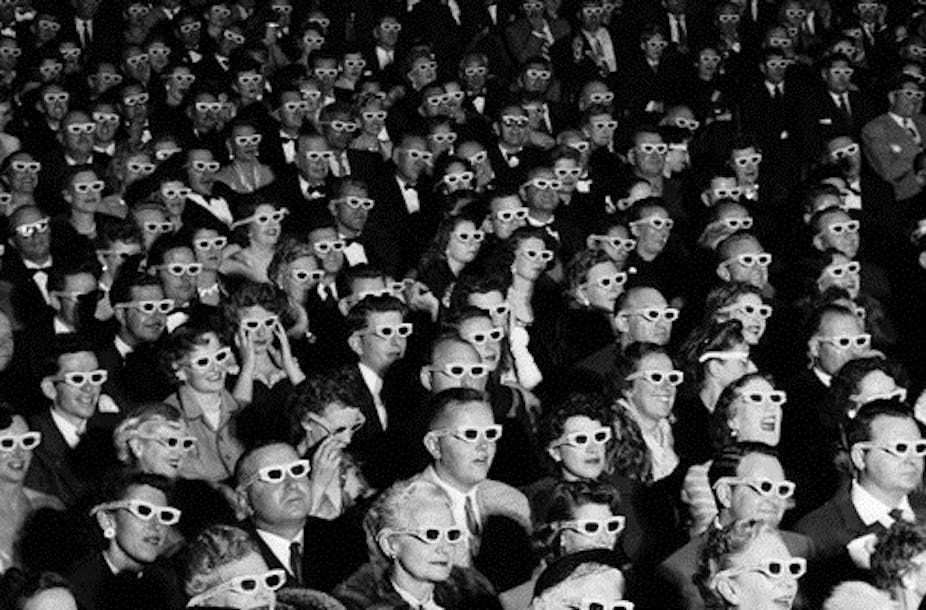Nearly every semester, I come across a student in a film studies unit sceptical about the purpose of our scholarly activity. “But it’s just entertainment,” he or she says. “We’re over-thinking it.”
In other words, “What is the point of studying popular films?”
As barbaric as it may appear, this is a good question. It forces one to reconsider, and to some extent thereby refresh, one’s perspective on the subject. It is a question, of course, far from limited to students, and is frequently posed by readers of popular film analyses and discussions.
The mute brutality of a phrase like “over-thinking” aside – which is usually a term misused by people who actually mean incorrect thinking, as though questions of intensiveness or extensiveness could ever relate to the degree of correctness – there are several reasons why we should study and think deeply about popular film.
First and foremost, why not? If it exists, it can be thought about; if it exists, it can be studied – and several elements are indeed endowed with beauty through the vitality of the process of study itself. The stunning colours and symmetries of microscopic organisms only become evident when sought out through analysis.
There is thus a fundamental aesthetic reason why we think deeply about films. Intensive analysis of an object often creates a profound and beautiful experience of the object. Understanding the complexities of the composition and function of an artwork makes it, simply, more enchanting – and more miraculous.
If it is, it can be thought about, in more or less detail depending on the force of the engagement between thinker and thought-object. Some things call out for minimal thought; others, which involve more complex processes and relationships and a wider array of potential predicates, require thought both more intensive and extensive.
Cinema, which involves myriad complex relationships and processes, artistic, economic, political, physiological and affective, certainly demands extended consideration.
Popular films (and television), furthermore, exert considerable influence on the way we think about and construct our worlds. Popular films both reveal society’s dreams and self-envisionings and shape individual perceptions of the world. It is important that we ask ourselves, thus, questions such as, “Why has the American superhero fantasy proliferated after 9/11? What does this show about the way we think about the world?”
We haunt spaces that are filtered through perceptions controlled, modified, expanded or restricted through our cinematic and televisual imaginings. The spaces of the screen, thus, in turn haunt our worlds.
Cinema is, as philosopher Alain Badiou argues in Cinema (2013), the art form that includes all other art forms. At the same time, because of its commercial imperative, it always hovers, Badiou argues, on the verge of un-art.
Architecture, music, drawing, painting, sculpture, poetry, drama, choreography and photography are embedded in cinema, to a greater or lesser extent. In thus including all arts, while at the same time revealing the limits of art, cinema offers, I would argue, the most complex aesthetic forms, as well as the forms that allow us to think through questions of aesthetics most productively.
Perhaps most significantly, cinema is the art form that conceives of vitality in its very essence. Motion becomes in films; the static becomes animated (soul-full, from anima, soul). Movement through, and the construction of, time and space defines the mechanics of cinema. The vitality that defines life is both manifested and captured in films. Perhaps it is, at the same time, destroyed through its reification.
This is why films are “dangerous” – why Joseph Goebbels, Reich Minister of Propaganda in Nazi Germany, was such an advocate of cinema, which could sell a message as an affective state – create a life-milieu – with a force and immediacy no piece of writing could ever hope to achieve. Some of the key modern popular films have looked at this potential – A Clockwork Orange (1971) and The Parallax View (1974) come to mind – but it’s a “danger” that already troubled Plato more than a couple of thousand years before the medium’s invention.
Cinema is so potent because it’s the art closest to embodying the vital principles, the magic and mysteries of life itself – and, like all sorcery, its origins, points of control, and manipulative functions need to be carefully considered.
Why are we so willing to outsource our dreams and desires to Hollywood corporations? How do they – and more importantly, how do we – benefit from this abstention from self-determination? I don’t think this question can be answered outside of related questions about pharmacology and immunisation, and it is undeniable that popular films immunise us against life, with its (mostly) unfathomable combinations of chaos and banality.
It is important to challenge the dreams corporations feed us about ourselves, and that we in turn demand to be fed – especially in an age in which most culture exercises a “self-help” function – because entertainment conglomerates continue to make a lot of money from these interactions.
Understanding how films watch and use us is key, and it is time we more openly discussed the power that technological (and technical) milieu have over us as individuals. In the same way that guns demand to be shot, films demand to be viewed.
Thus, as this column continues to unfold and we continue to think “through” popular films together, keep in mind the significance of the processes undergirding, threaded through, our thinking.
We shall think about popular films, but, more significantly, think about thinking – as the vital process of mind-formation, which is always dependent on the conjunction between brain and culture, physiology and environment – using popular films as objects that enable us to explore thought itself.

